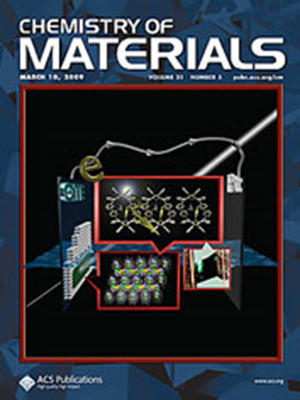PyOpticon: An Open-Source Python Package for Laboratory Control, Automation, and Visualization
IF 7
2区 材料科学
Q2 CHEMISTRY, PHYSICAL
引用次数: 0
Abstract
In modern materials science and chemistry laboratories, there are many opportunities for control, data acquisition, and automation software to enhance the quality and throughput of research. Desirable traits for such software include low cost, easy and speedy implementation, compatibility with existing instruments, and the flexibility to build and modify one’s own control software. In this article, we present PyOpticon, a free and open-source Python package for controlling and acquiring data from benchtop experimental setups. PyOpticon desktop applications, termed “dashboards”, provide graphical interfaces to control different combinations of physical devices, each represented onscreen by a “widget”. We describe PyOpticon’s features with respect to graphical interfaces, remote control of experimental setups, data logging, safety interlocks, and automation capabilities. We highlight the ability to script complex or repetitive experiments using Python code. While existing commercial software tools offer such features, PyOpticon makes them available for free to researchers with only a basic knowledge of Python, who can then adjust and reconfigure their control software without outside help. Detailed online documentation and tutorials are available to support new users. We discuss the package’s structure, offer examples of its implementation, and demonstrate its use in experiments on the photocatalytic total oxidation of dilute methane.

PyOpticon:一个用于实验室控制、自动化和可视化的开源Python包
在现代材料科学和化学实验室中,有许多机会使用控制、数据采集和自动化软件来提高研究的质量和吞吐量。这种软件的理想特性包括低成本,易于快速实现,与现有仪器兼容,以及构建和修改自己的控制软件的灵活性。在本文中,我们介绍PyOpticon,这是一个免费的开源Python包,用于控制和获取台式实验设置中的数据。PyOpticon桌面应用程序,被称为“仪表板”,提供图形界面来控制物理设备的不同组合,每个组合在屏幕上由一个“小部件”表示。我们从图形界面、实验设置的远程控制、数据记录、安全联锁和自动化功能等方面描述PyOpticon的特性。我们强调使用Python代码编写复杂或重复实验脚本的能力。虽然现有的商业软件工具提供了这些功能,但PyOpticon将它们免费提供给只有基本Python知识的研究人员,他们可以在没有外界帮助的情况下调整和重新配置他们的控制软件。详细的在线文档和教程可用于支持新用户。我们讨论了该包的结构,提供了它的实现实例,并演示了它在光催化全氧化稀甲烷实验中的应用。
本文章由计算机程序翻译,如有差异,请以英文原文为准。
求助全文
约1分钟内获得全文
求助全文
来源期刊

Chemistry of Materials
工程技术-材料科学:综合
CiteScore
14.10
自引率
5.80%
发文量
929
审稿时长
1.5 months
期刊介绍:
The journal Chemistry of Materials focuses on publishing original research at the intersection of materials science and chemistry. The studies published in the journal involve chemistry as a prominent component and explore topics such as the design, synthesis, characterization, processing, understanding, and application of functional or potentially functional materials. The journal covers various areas of interest, including inorganic and organic solid-state chemistry, nanomaterials, biomaterials, thin films and polymers, and composite/hybrid materials. The journal particularly seeks papers that highlight the creation or development of innovative materials with novel optical, electrical, magnetic, catalytic, or mechanical properties. It is essential that manuscripts on these topics have a primary focus on the chemistry of materials and represent a significant advancement compared to prior research. Before external reviews are sought, submitted manuscripts undergo a review process by a minimum of two editors to ensure their appropriateness for the journal and the presence of sufficient evidence of a significant advance that will be of broad interest to the materials chemistry community.
 求助内容:
求助内容: 应助结果提醒方式:
应助结果提醒方式:


